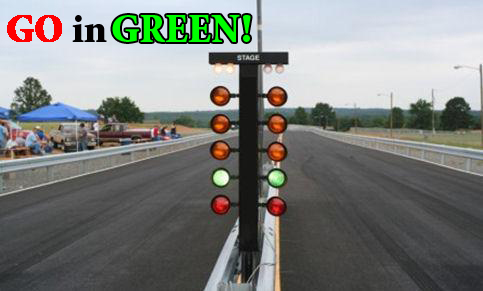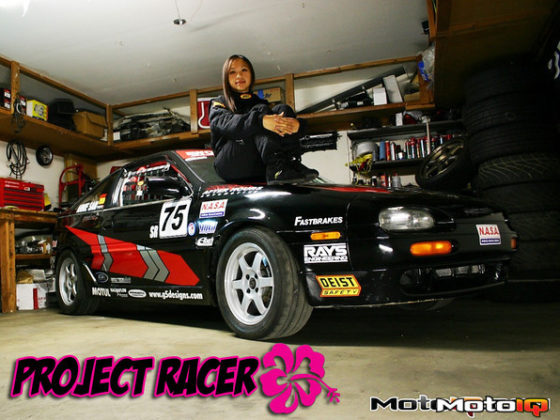,
Pre-Grid
You’ve finally passed tech and you’re directed to line up and wait for your turn to run. Depending on how many people are participating, there is a good amount of wait time between pre-grid and actually lining up at the staging light. During this time, it is suggested to turn off your engine to keep it from heating up. This is especially good practice if you have already run your car several times, as shutting down the engine will help it cool and keep it from overheating. Rolling it through pre-grid in neutral with your engine off isn’t a bad idea. However most late model Nissans make the best power when the engine is warm. The best point is where the engine is cool but the temperature is just starting to read near the normal point on the gauge.
 |
What usually doesn’t work is revving your car in neutral up to redline while you’re in pre-grid. Doing this doesn’t do any good to your vehicle, and the people around you will think you’re a complete moron. Yeah, yeah, we know what an exhaust sounds like. And most likely, the guy revving has an exhaust that sounds like a tin can of angry bees. The same idea goes to those who decide that pre-grid is a time to bump your system. Also, do not leave your car unattended on the grid, trapping everyone behind you. If you do need to leave your car for any particular reason, make sure your car alarm is on valet mode. Having your alarm blaring will earn you cold stares by annoyed racers that will think you’re a jack ass. More importantly, you may miss any crucial messages that the announcer makes.
Staging
You can feel your heart beating faster and faster as you approach the staging light. By the time you’re up front and next in line, you should already be strapped into your seat with your helmet on. When the worker points you up to be next in line, drive up to the edge of the concrete slab, where you wait for the car in front of you to go. When they take off, another worker will point for you to line up at the staging light. Here you have two options; if you have slicks, you can do a burnout in the water pit to warm up your tires. If you have street tires, drive around the water pit and do not do a burn out. It is a common misnomer that doing wet burn outs in street tires will give them better traction, but in fact, they become greasy when hot and provide very poor traction. Once around the water, with street tires you can do what is called a dry hop to clean them off so they can bite a little better. You can do this by revving your engine up to 4000-5000 rpm and pop the clutch to do a short burnout, like maybe only about 3-5 feet, just to clean the dust and pebbles off your tires. Unless you have a real Funny car, don’t do a huge Funny car style burnout past the lights. That stunt will earn you the scorn of the officials, plus everyone watching will think you are a dork.
 |
In your typical “run what you brung” event, the countdown lights to the tree are sequential. This kind of light with the sequential yellow lights is called a Sportsman Tree. The Sportsman Tree runs a 0.500 index, meaning a reaction time of 0.500 seconds is a perfect light. Anything quicker is a red light. There is a second kind of light called a Pro Tree that simply goes from the first yellow straight to green. Pro Trees are usually found when racing pro events, like IDRC, IDRA, Nopi or NHRA events. When running a Pro-Tree, having an ultra quick reaction time is critical, pre-loading the clutch and having killer concentration is a must. A Pro Tree has a .00 index meaning a perfect light has a reaction time of 0.000 seconds. Anything quicker is a red light. Of course a Pro light is very difficult and challenging. If you take notice of the tree light in the diagram, you will find two sets of yellow light bulbs at the very top of the tree. These lights are connected to a photocell or infrared sensor, which is triggered when your front tires roll in between them to interrupt the light beam. The first set of lights will turn on when you roll up to the first set of lights, called the pre-staging lights. This indicates that your car is almost to the starting line. The second set of lights will turn on when your car is at the starting line. These lights are called the staging lights. Roll through this slowly and light both the pre-staged and staged lights. These sensors are very sensitive. If you roll too far forward the pre-staged light will go off, if you roll way too far the pre-staged and staged lights will both turn off and you have to back up. It is good drag racing etiquette to try to stage quickly and smoothly. If you flub around a lot, the officials will tend to get impatient. The tree light will not start until both cars have properly staged, meaning all four sets of yellow lights are on. As soon as both cars have staged, the countdown lights will blink…



